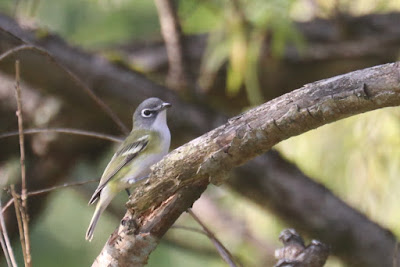Looking Back on Fall
Friday, November 13, 2020
Man, it was such a beautiful fall. In the midst of all the mishegas going on in this country, we here in Ohio had that, at least, and it was a lot. I look at these photos and can't believe the meadow ever looked like this.
But it did, it did, and I was out there every morning I could be, photographing it and reveling in the million little cigarette lighters the goldenrods held up, saying Thank You Fall, We Loved It! Play One More!
I had an absolute blast with monarchs, watching them chomp six potted Asclepias, bringing them in so I could be there for their special moments. And there are so many special moments with monarchs. I have reams of them on video, and I must get to them. So when winter finally arrives, I will have a busy studio, humming with industry. I don't intend to twiddle my thumbs.
I wanted to show you a few of the birds who came across my little bit of Appalachian ridgetop this fall. There were so many bay-breasted warblers! You can tell them by their lead-colored legs and sweet open faces. Blackpolls have orangey feet and a more severe look about the eye.
Same baybreast, preparing to go.
Here's a blackpoll for comparison. If you click on the photo, you can see its orangey (not cool lead gray) feet. See the facial expression? Sort of calculating. Not as innocent as the baybreast, whose eyes are framed in pale crescents.
And there was a late flush of blue-headed vireos, and I don't think a BHVI is ever more beautiful than in fresh fall plumage. Look at that snowy white throat and breast! The shading of olive at the sides of its chest are just delicious. And those shining white spectacles. Hard to miss this bird, and it's quite vocal in fall as well, voicing a squeaky, chirrupy, slow, Cheree! Cheerio? Squee?
Blackburnian warblers have the mostest eye stripes! This is a superciliary (over the eye) line. Look how long and pronounced it is--and orangey. Also note the pronounced back striping. The central pair down the middle of its back will be whitish on a Blackburnian.
It's pretty easy to identify the diminutive black-throated green warbler. Males keep a good bit of their coloration in fall. The stark black throat is overlain by white scaling, which is just fresh feather fringes. Those will wear off by spring. The big golden head sides are a good tipoff for ths species.
One of the most common fall migrants here is the Tennessee warbler, notable for its plainness. There are almost always traces of wingbars. Tennesses have short, sharp bills and a short-tailed cobby shape. They make constant lisping notes as they forage together, and when they take off they invariably drop a sweet shower of tsit notes as they go. Over the years and the annual waves of fall migrants, these little cues tell me what I have--I don't even need to see them to know they're around.
White undertail coverts help separate the Tennessee from the similar looking orange-crowned warbler. Tennessees are whiter below than orange-crowned, and only rarely have any streaking on the breast. This is a Tennessee, taking off from a bath in the Bird Spa.
Above: sludgy lil phoebe; below, natty lil peewee.
Yellow-bellied sapsuckers had a good showing. Most of them are immatures, which makes for some very nondescript woodpeckers. But note the big longitudinal white wing panel. This is surprisingly easy to pick up at a distance, and when coupled with their swoopy flight style, usually ending as they stick a vertical landing on a tree trunk, you can amaze your friends with your long reach woodpecker ID's. I hope I get a peanut/suet freeloader again this winter. I love sapsuckers. They pound my birches to pieces, but that's OK with me!
So I passed an agreeable and lovely fall, walking the paths and watching the birds. Watching the meadow change every day was a thrill--waiting for them to throw the main power switch that would light up all the goldenrod at once.
And the Maximilian sunflower glowed.
|
Widget for blogger by Way2Blogging | Via Spice Up Your Blog Gadgets
|
























6 comments:
thanks for that recap of the confusing fall warblers....
they look so distinct when you take pics for me AND label them
Your appreciation of the beauty all around you is like listening to a good preacher! Amen.
The juncos are back in suburban Detroit for about a week now. And I was a little alarmed to see a Carolina Wren here, too. Seems late, but maybe the birds are shifting with the growing zones. Have seen about a million woolly bears this year.
Lovely post!
Gorgeous photos!!!
Julie - I'm at First Community in Columbus now. I have a smallish area in the back which is sunny and the same in the front which is mostly shade - it gets light but no direct sun. What plants would be the most important to try to grow? I've had so many in different gardens but now I must chose only a few. Thanks, Becky Wright
Post a Comment